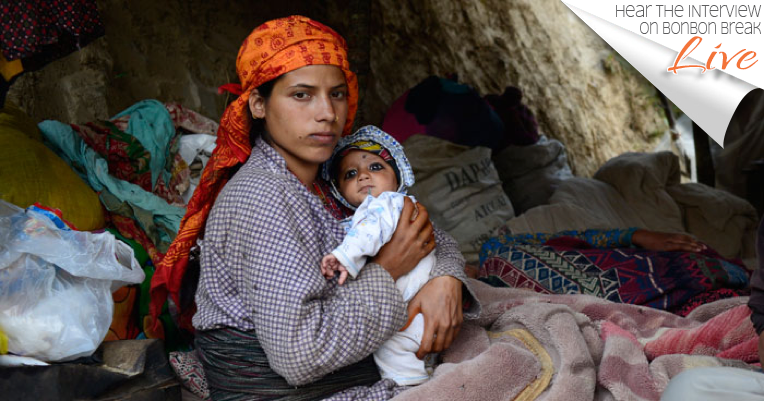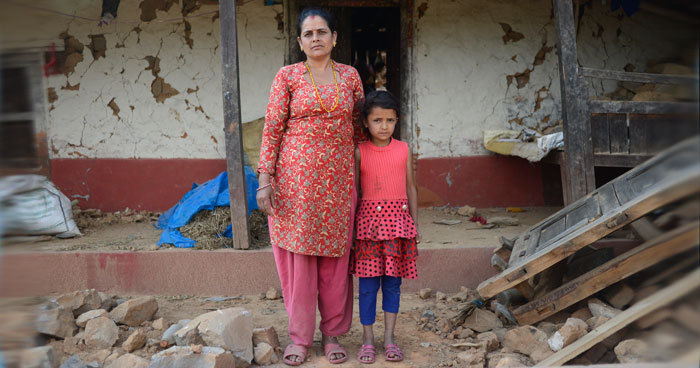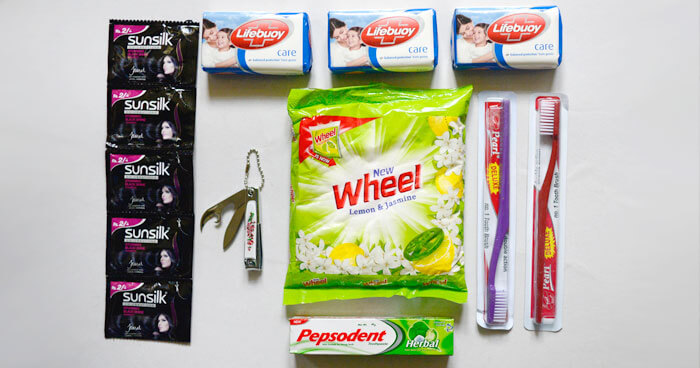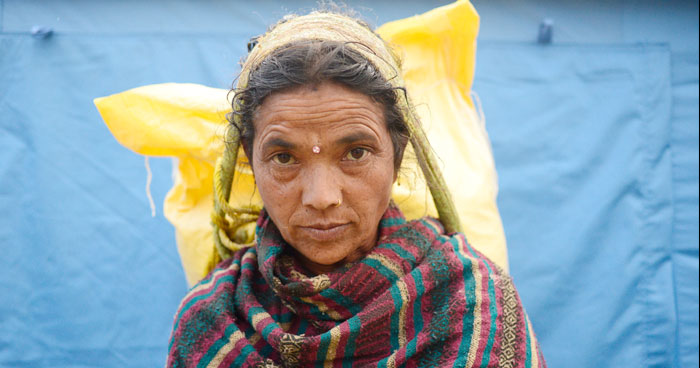When Everything is Gone

I feel fortunate that my organization, WaterAid, has been working in Nepal for over 20 years. Long before the 7.9 magnitude earthquake first rocked the country on April 25, my colleagues were there, expanding access to clean water and toilets, breaking taboos around menstruation, and promoting simple hygiene practices like handwashing with soap. Known for our local expertise and close relationships with community leaders and marginalized families alike, we have a long history working in 27 districts across the length of the country.
WaterAid is a highly-esteemed development organization. But as the earth shook and so many people’s lives seemed to crumble in the villages where we work, we knew we had to begin emergency response work as soon as our local team and partners were ready and able to take action.
“I am so sad,” survivor Kanchi Bajgain told us. “We haven’t been able to salvage anything from inside the house, just a few blankets and a cupboard. Everything is gone.”

A long road to recovery
Kanchi lives in the village of Nala, in the Kavre district of Nepal. WaterAid has been working with the community here for nearly five years, installing toilets and infrastructure that uses the force of gravity to distribute drinking water where it’s needed.
The village was built around a narrow road that winds its way up a terraced mountainside, where farmers work hard to grow wheat, potatoes, corn and other vegetables for the markets in Kathmandu.
Since the quake, more than half of the homes now lie in ruins. And while the gravity-flow systems we’ve helped to install are still largely intact — meaning survivors do at least have access to water — the supply is dirtier and less frequent than before. Disconnected pipes and broken taps litter the ground, indicating how much repair work will need to be done here.
For 20-year-old Sushmita Bagjain, the pressure of taking care of her three-month-old son in these circumstances is taking a heavy toll.
Her neighbors dug her out of the rubble when her father-in-law’s house collapsed during the earthquake. She’s happy to be alive, yet her injuries have left her in pain and unable to walk properly. Sushmita is now spending most of her days under a blanket on the ground, in a makeshift shelter of metal sheeting propped up with bits of salvaged wood against the hillside.
“My injuries have made it hard for me to breastfeed my child,” she told us. “I am not able to boil water for the baby and I can’t keep him clean. I am able to wash some of his clothes but not as I did before.”
Listen to Val Curtis interview WaterAid’s CEO, Sarina Prabasi, on STITCHER – LIBSYN or iTunes
The first steps toward rebuilding lives
Nala is just one of the communities where we’re providing emergency water and sanitation support to the people of Nepal.
In emergency situations like this one, we know that it’s crucial for people to have access to clean drinking water, and that human waste is safely disposed of. Without these basics, outbreaks of diarrhea, cholera and typhoid can pose real and serious risk to survivors long after the tremors have stopped. Our biggest concern right now lies in the potential for a second disaster: a deadly cholera outbreak.
That’s why we, together the Nepali Ministry of Health and our local partners, are busier than ever, distributing more than 30,000 essential hygiene kits to help families across the country stay clean and healthy as they begin to sort out what will be a long road towards full recovery.

These hygiene kits include soap, shampoo, laundry powder, nail clippers, sanitary pads, toothbrushes, and toothpaste. With clean water proving to be a significant cause for concern, WaterAid is also distributing key essentials like water purification tablets (over half a million of them!), face masks, oral rehydration salts and jugs of toilet disinfectant, and helping to dig emergency pit latrines.
These seemingly simple steps can have a huge impact in an emergency like what we’re seeing in Nepal. For 42-year-old Sushila Sighdel, whose family is already getting sick from the poor public health conditions created by the quake, these vital supplies could not come soon enough.
“My husband died five months ago and I am living alone with my four children,” she told us. “My house has been badly damaged, and it’s no longer safe to live there. We still have access to water, but the toilet has been damaged, so we have built a makeshift one, a hole with some plastic sheeting inside. My children are suffering from diarrhea and headaches, and my daughter is on rehydration salts — this help is a relief.”

We need your help
WaterAid is in Nepal for the long run. Drawing on the last 20 years of our work in Nepal, we’re committed to the essential rebuilding of water and sanitation services — including in the hard-hit Gorkha district that was at the epicenter of the first earthquake, and where much of our long-term development work is concentrated.
Please help us support Nepali families as they take the first steps towards rebuilding their lives by donating to WaterAid’s Nepal earthquake appeal.
Help Nepali families rebuild their lives by donating to @WaterAidAmerica's Nepal Earthquake Appeal. Click To Tweet
Any funds raised above what is needed for our emergency response efforts will be put towards our longer term rehabilitation work in Nepal. As GuideStar Philanthropedia’s #1 ranked water and sanitation nonprofit, you can be sure that your hard-earned dollar will go to bring water and sanitation to those who need it most. Thank you for your support!
NOTE: All advertising proceeds from this post will be donated directly to WaterAid.


